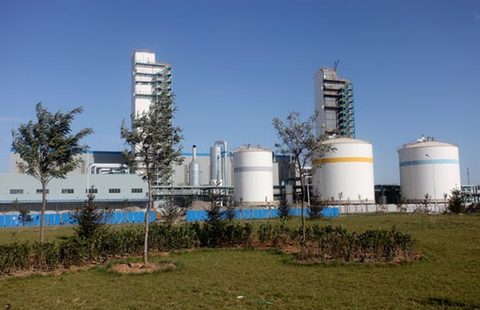
Beijing's three-step plan to tackle total public debt is making headway but more action is needed
China's economy is undergoing a difficult structural transition on many different fronts. The shift away from investment-heavy, industry-led growth toward a new model where consumption and services dominate is not an easy one. It has thrown up many challenges, not least in the area of government finance. While central government finances in China remain healthy, this is partly a reflection of the fact that in China the central government tends to receive most fiscal revenues while regional authorities do most of the spending. At the local level, budgets look increasingly strained.
In recent years many regional governments have become dependent upon revenue streams associated with land sales. IMF research published in 2014 suggested that net revenues derived from land sales could be equivalent to around 2 to 3.5 percent of GDP. This sizable figure was not evenly distributed, and in some regions land sales even provide the majority of local government income. Yet last year returns from land sales increased by just 3.2 percent. Given the level of excess housing supply in many smaller cities, the prospects for inflows from land over the medium term are not good. Meanwhile, China's slowing economic growth has also crimped growth in tax inflows, putting added pressure on public finances.
The increasing cash flow problems at the local government level are a concern, but it is hard for outside observers to tell just how pressing the need is to adopt reforms that put their finances back on a more sustainable track. Estimates of public debt in China vary wildly, partly because it is not clear exactly which debts are guaranteed by the state. The lower estimates, at around 40 percent of GDP, would be relatively modest for an emerging market, but some estimates suggest that the debt level could be much closer to 100 percent of GDP.
A legacy of skewed incentives
Those who have looked closely into the liabilities associated with local governments (where the bulk of the uncertainty lies) suggest that the true level of total public debt is likely to be higher than most people think. For years, regional officials have faced skewed incentives that encouraged them to pursue economic growth above all else. Many sought to do this through debt-fueled investment drives, with little thought as to whether projects would deliver returns that would allow the debt to be paid back.
The current government under Xi Jinping, to its credit, seems well aware that this approach has run its course and needs to be revised. It has adopted a three-prong approach to tackling the problem: improving transparency, adjusting incentives and finding new revenue streams to put local government finances back on a more stable footing.
Three-pronged strategy
On the first two parts of this approach, there has been good progress. Beijing demanded last year that local governments present a full accounting of exactly what debts they had guaranteed. Although the process has been extended, after the central government rejected the initial figures presented by several local authorities, this should give us a much better picture of what the true level of public debt in China is - provided that the government is willing to share this information.
Policymakers have also made headway in adjusting incentives. Officials are no longer judged primarily on their districts' economic growth performance, and levels of debt are taken into account when considering the economic record. Meanwhile, the central government has increased pressure on local administrations to be more transparent about their finances. They will be allowed to issue debt directly, but the use of off-budget financing tools is being curbed. Notably, they will no longer be allowed to guarantee borrowing by local government financing vehicles. Judging by the sharp drop in debt issuance by such entities since the start of the year, that restriction seems to be effective.
The fact that these steps have been taken before public finances experience a debt crisis is reassuring. However, the government has not yet succeeded in putting in place a more sustainable tax system for local administrations, to replace the land revenues that are drying up. Increased transfers of cash from the center, higher environmental fines, administrative fees and mini-taxes, such as the resource tax, have helped, but alone they are unlikely to be sufficient to make up the shortfall.
There is an emerging consensus that a property tax will need to be a part of the answer. Yet the pilot property tax schemes in Chongqing and Shanghai have not been notable successes, raising insignificant sums for the cities involved. The reluctance of other cities to set up similar property tax pilot schemes speaks volumes about how difficult it will be to roll the project out nationwide, and the timeline for doing so has been repeatedly moved back. Nonetheless, the central government still seems keen.
China still has a few years to get its fiscal house in order. Even including local government debts and those of the state sector, the level of overall public debt remains manageable. The bigger concern is the need to replace the fiscal revenue from land sales as that income stream begins to dry up. The central government has put forward some good ideas about how to do this, but the reality on the ground is still lagging behind the policy rhetoric. Time is running out fast.
The author is regional editor for Asia at the Economist Intelligence Unit.
(China Daily Africa Weekly 03/27/2015 page9)








